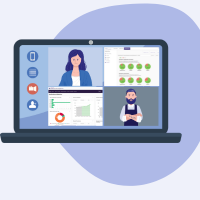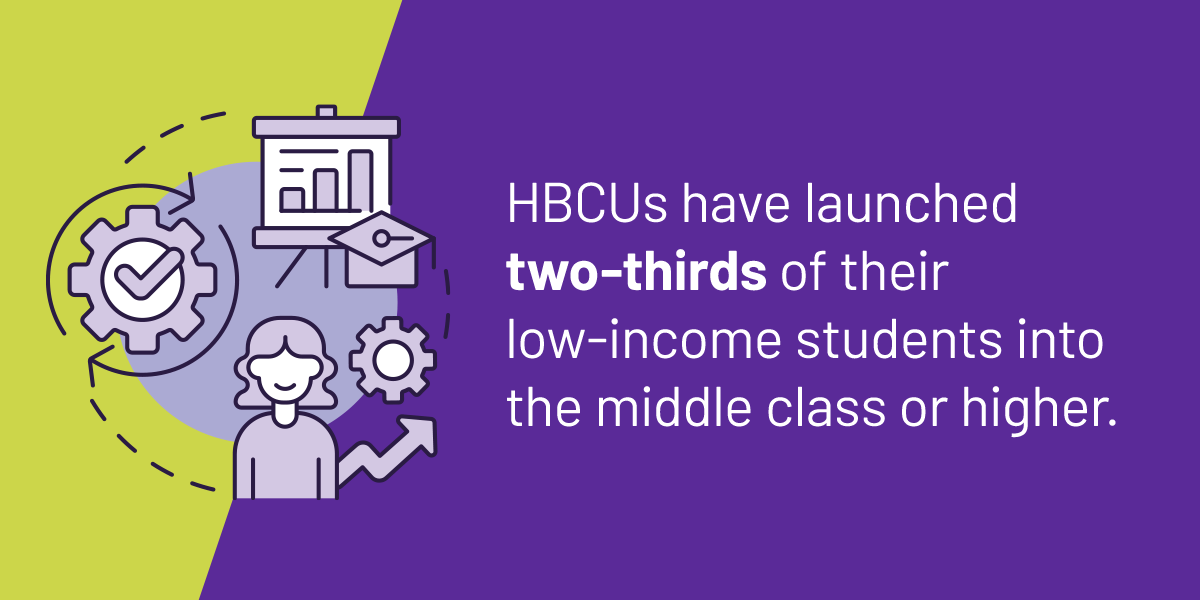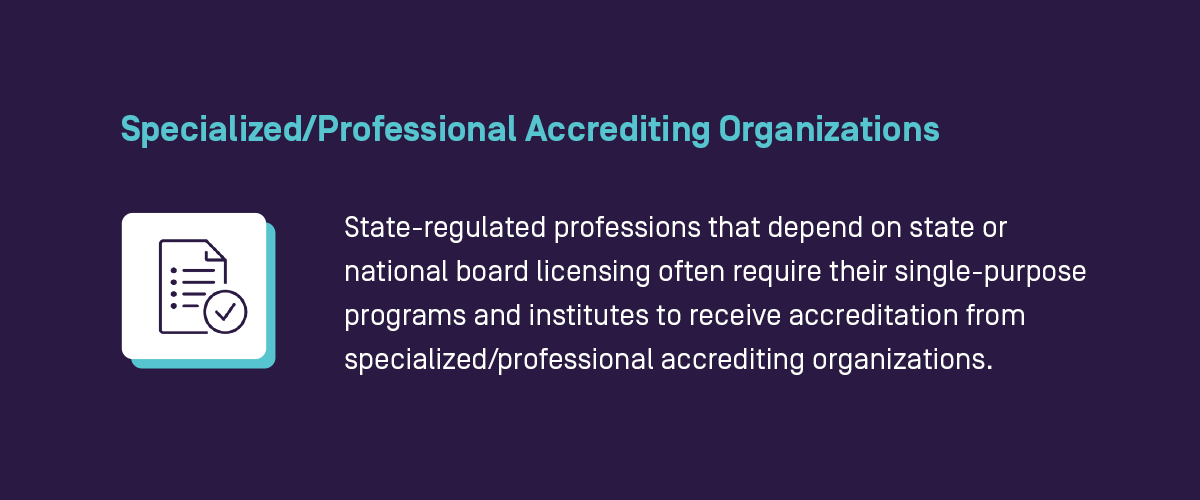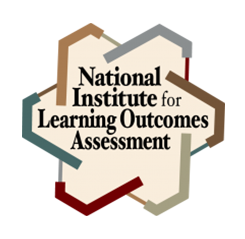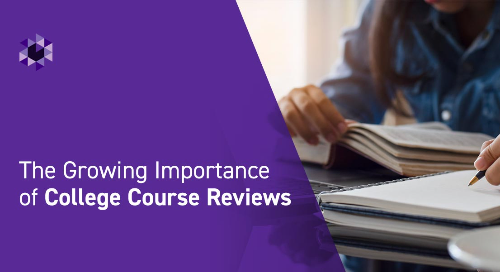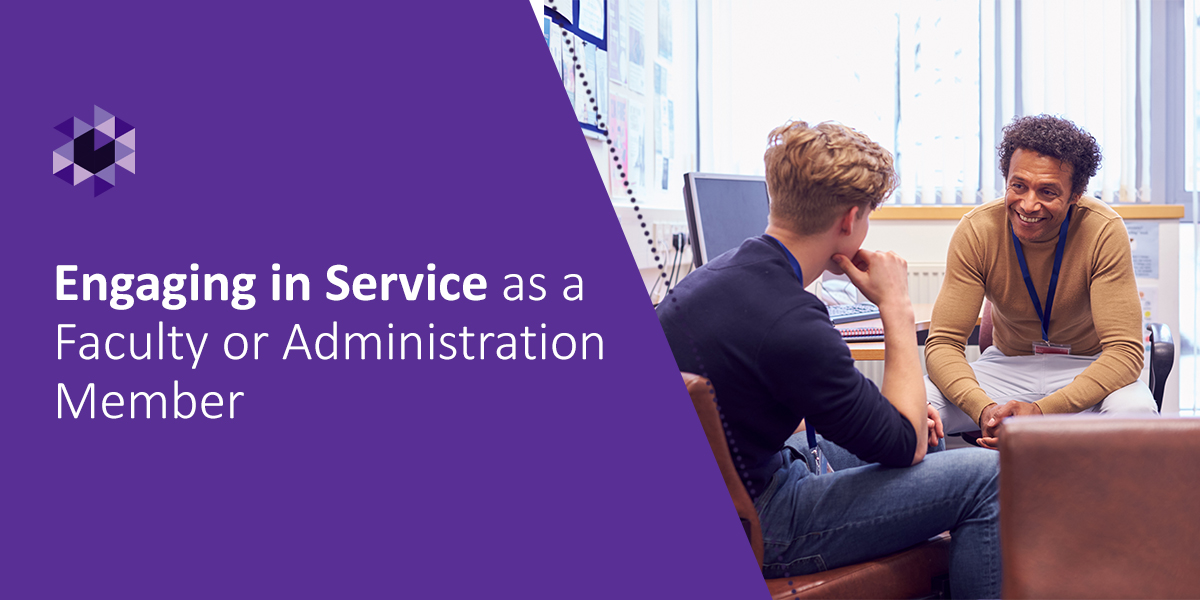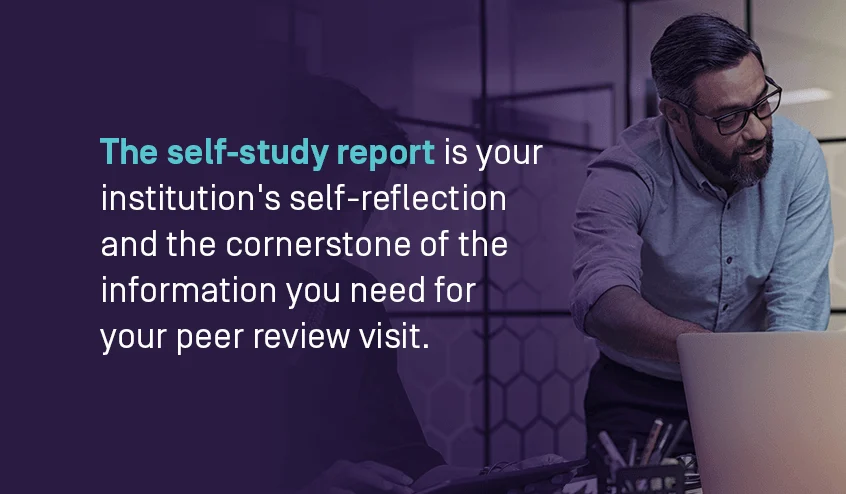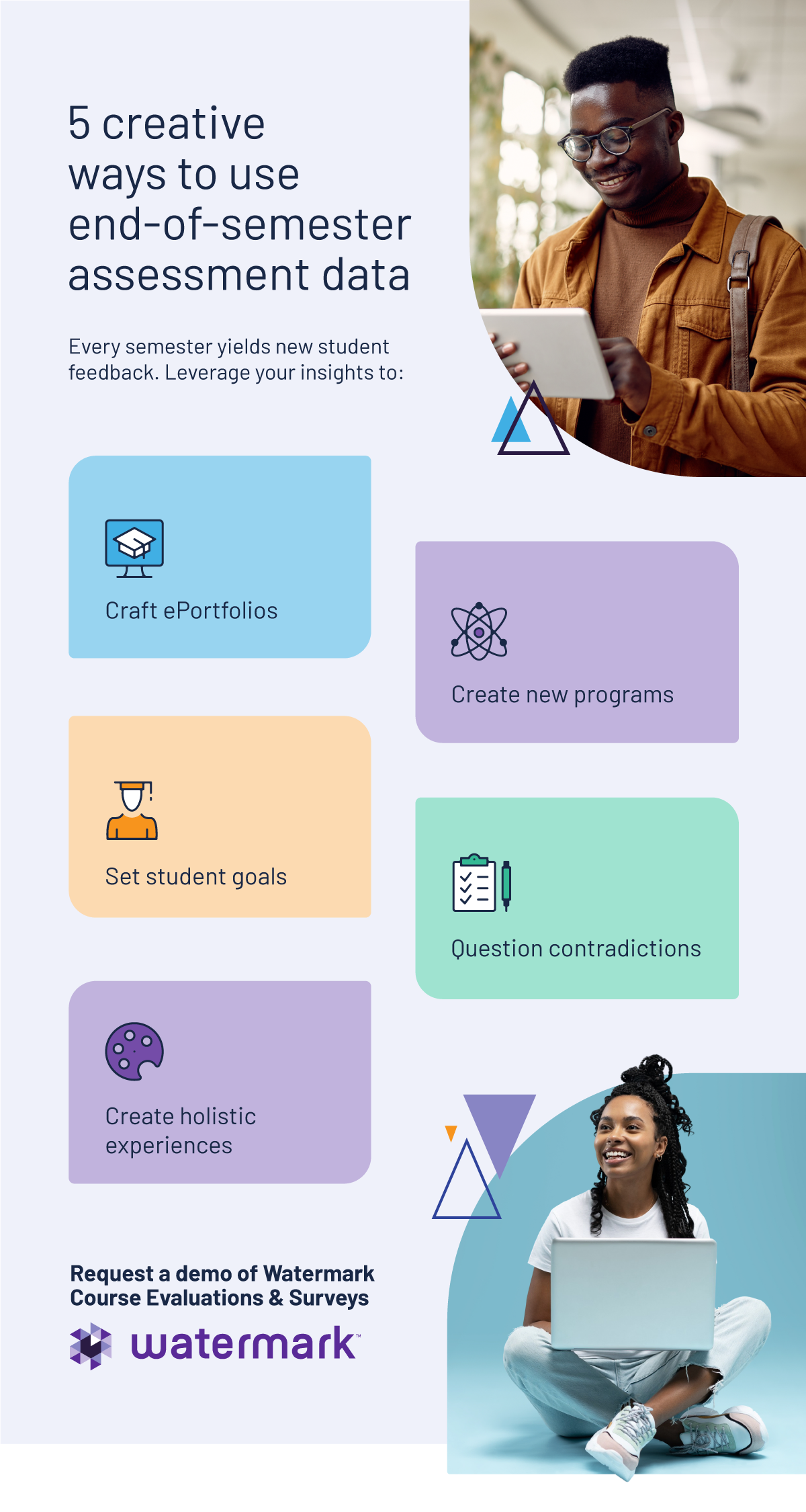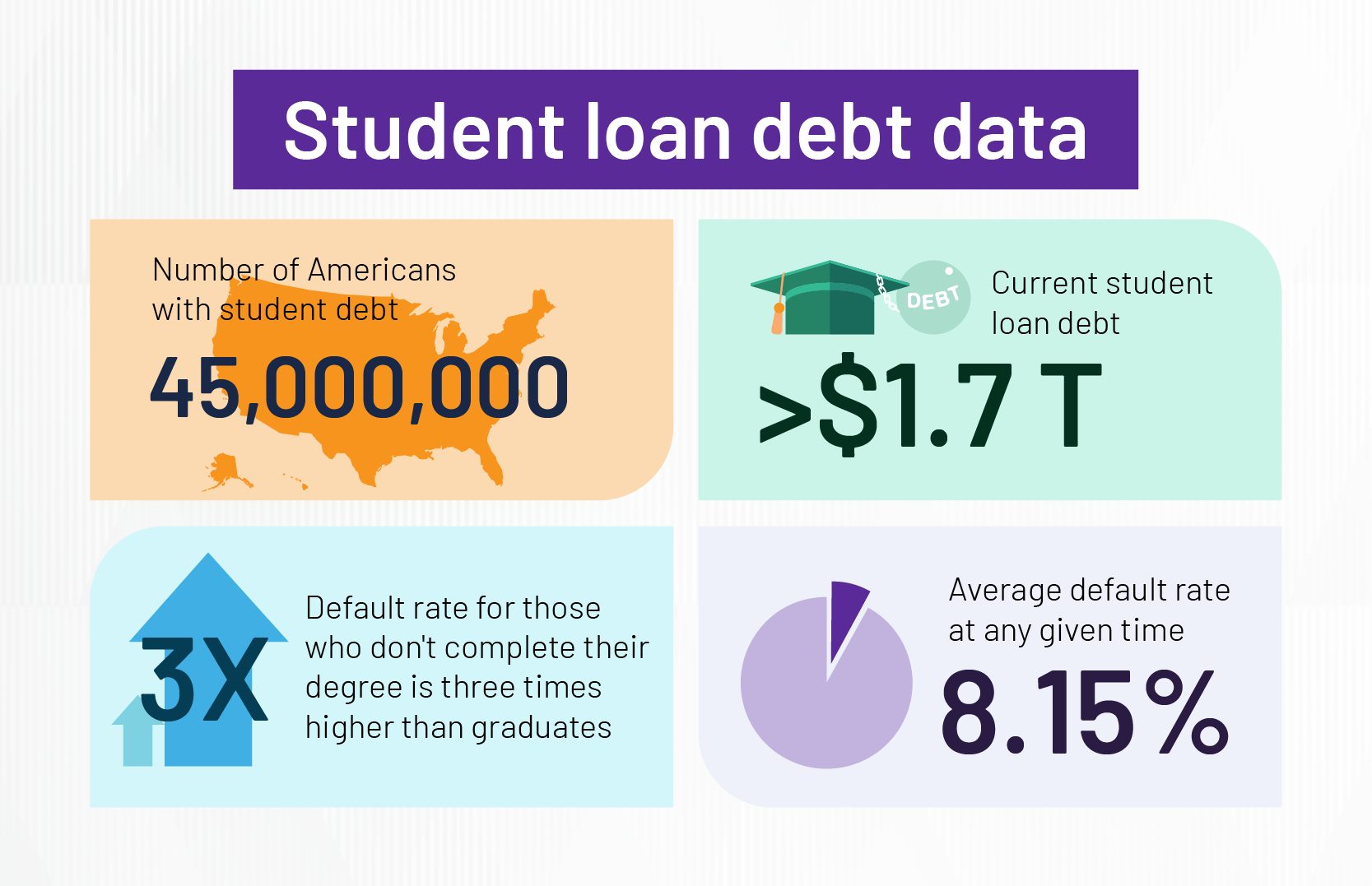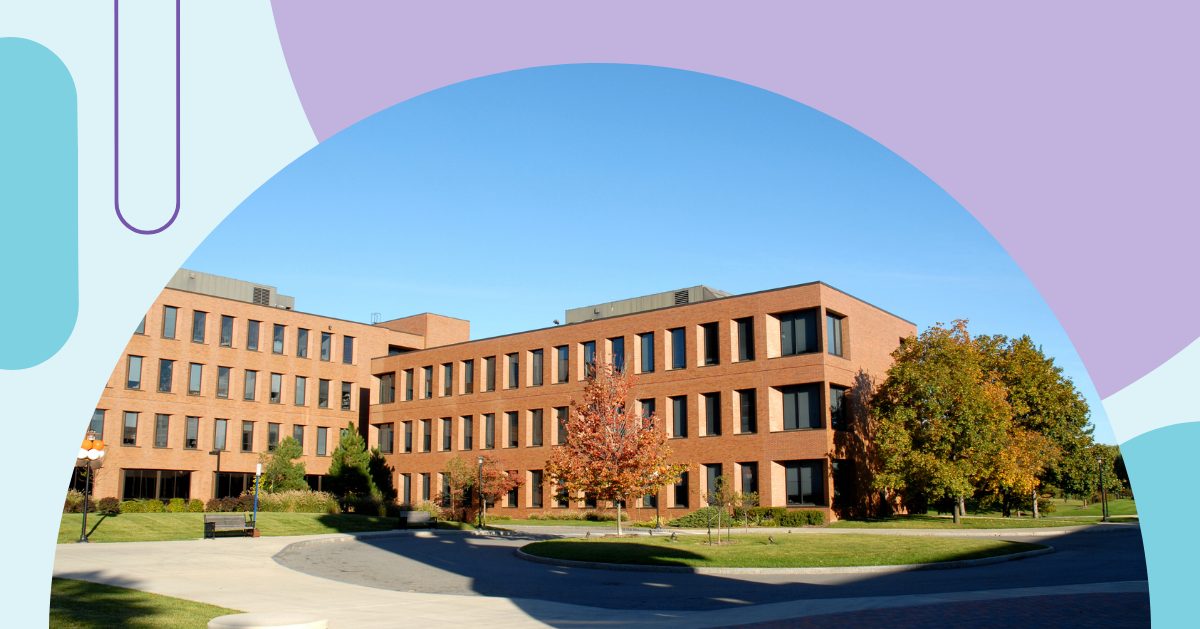Higher education tuition has doubled in the last 20 years, with some institutions today hitting the $100,000 mark for a four-year degree. These escalating costs have discouraged many prospective students from taking the leap into academia, as well as those experiencing waves of ballooning debt. However, it’s not only students who feel the pinch. As costs rise, higher education institutions and communities feel it, too.
The prospect of federal funding cuts adds another layer of uncertainty to an already complex situation. If institutions lose funding, the bulk of the burden falls on families, limiting the prospective student pool even more. Below we’ve outlined some of the key factors contributing to rising college costs.
The rising cost of college — a look at the numbers
Today’s US students can expect to pay an average of $30,884 for tuition, fees, and accommodation over a four-year degree. However, many numbers are above this average. College tuition and fees rose 4.7 percent from 2020 to 2023 alone, and they continue to rise with every passing year, leaving students struggling to keep up.
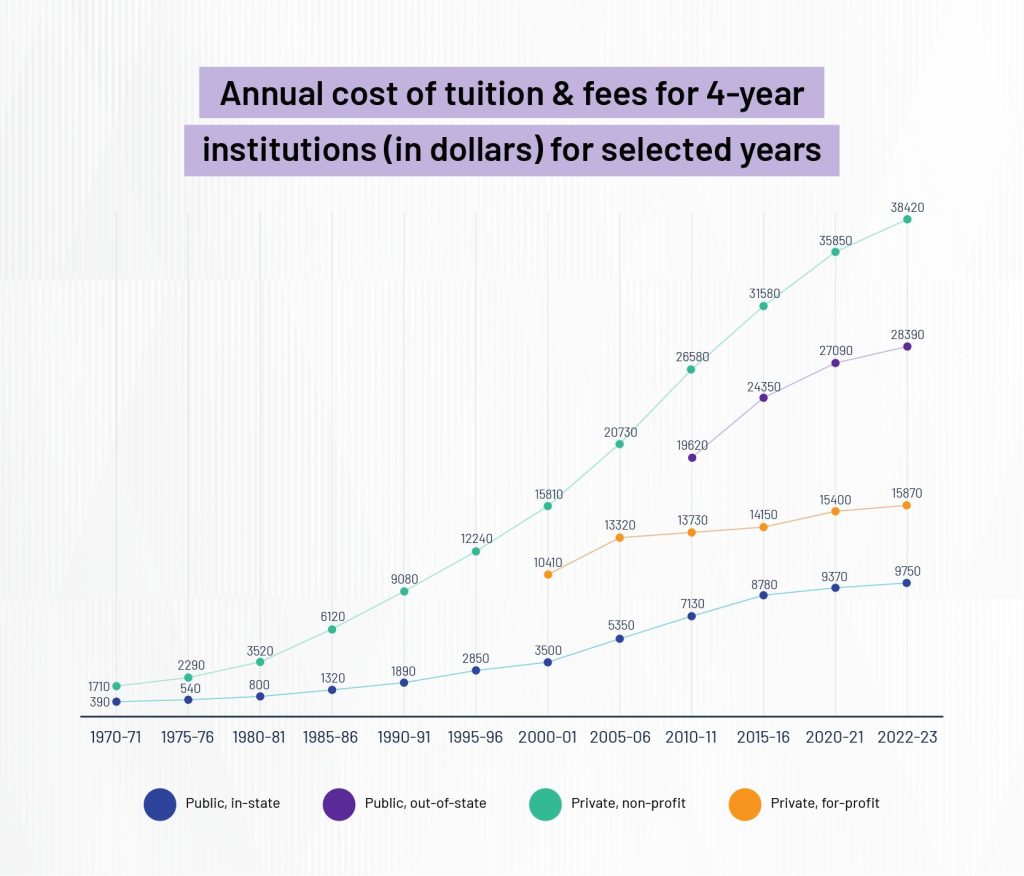
Source for graphic: educationdata.org/average-cost-of-college-by-year
While tuition trends vary considerably between programs and student income, the fact remains that prices are significantly higher. Students are also shifting to more expensive programs and institutions, compounding the effect of these costs. Postsecondary institutions have an average increase in college tuition per year of 5.87 percent, which means there has been a 48.9 percent increase between 2009 and 2023. Even accounting for inflation, higher education is rapidly becoming a life-changing financial decision.
To fuel the fire, Congress is advancing a budget bill that could impact federal funding programs that support students and institutions. It also aims to introduce tax updates that make it more expensive for students to pursue higher education, rendering it more challenging for institutions to sustain their missions. More proposals are under discussion, which could repeal the tax exemption for scholarships and fellowships and eliminate the American Opportunity Tax Credit. Both of these options alleviate the burden on students and their families.
Why is college tuition so high?
The rise in higher education costs involves a convergence of factors, including:
Administrative bloat
Some higher education institutions have more administrators and managers than undergraduate students. U.S. higher education institutions increased administrative staff by 164 percent between 1976 and 2018, and numbers continue to rise. As institutions offer increasingly broad student support, growth in administrative and nonteaching hires is steady.
Administrative bloat is a broad term, however, and many of the additional hires fill legitimate institutional needs. The average student profile is changing, and nearly 75 percent of college students are nontraditional. Investments in student success are essential for institutions to fulfill their missions, and many student groups today need more support than their peers of yesteryear.
Decreased state and federal funding
State and federal government funding is the lifeblood of many institutions, but the amount they receive has become more uncertain. Even before the recent political shift, 32 states spent less on higher education institutions in 2020 than in 2008. In January 2025, the Office of Management and Budget issued a memorandum pausing federal grants. While the pause only lasted two days, it highlighted the potential for change in the coming years.
Since then, there’s been a whirlwind of change in the funding department. Many higher education institutions remain confused about what will happen next. With the cost of education already the biggest barrier for students, shifting the financial burden has far-reaching implications for higher education. Federal funding cuts can potentially create significant financial shortfalls in institutional budgets. That means students face increased tuition and fees for services once covered by federal funding.
Demand for services and resources
When many students think of higher education, the complete experience comes to mind. They expect sports, full dorms, contented faculty, cutting-edge research, and buildings filled with classrooms. Many students get exactly that, but it comes at a cost. The complete college experience means maintaining buildings, housing, feeding students, and competitive packages for the increasing number of staff needed to maintain these massive facilities.
In addition, institutions must keep up with the blistering pace of technology. Every year, they need updated equipment and software to stay current. They invest more in retention and student support to see students from diverse backgrounds through degree completion.
Higher education institutions are under mounting pressure to attract students. Students are more discerning every year about where they spend their money. Despite the economic climate, institutions compete to attract students with state-of-the-art facilities and programs. They need to increase tuition to maintain the status quo, let alone improve.
The effects of rising college tuition
Regardless of the reasons for rising tuition costs, they profoundly impact every aspect of higher education. Continued cost increases have caused a seismic economic shift, which has a ripple effect well beyond the world of higher education. Cash-strapped students spend less on and around campus, and graduates paying off massive student loans cannot save to buy homes, which means they balk at other large purchases.
The effects of soaring higher education costs are felt keenly closer to home. They include:
Intensified student debt crisis
Around 45 million Americans have debt from student loans that total more than $1.7 trillion. This debt has skyrocketed in recent years, outpacing most other forms of consumer debt. The average student is borrowing more to cover the increasing cost of tuition.
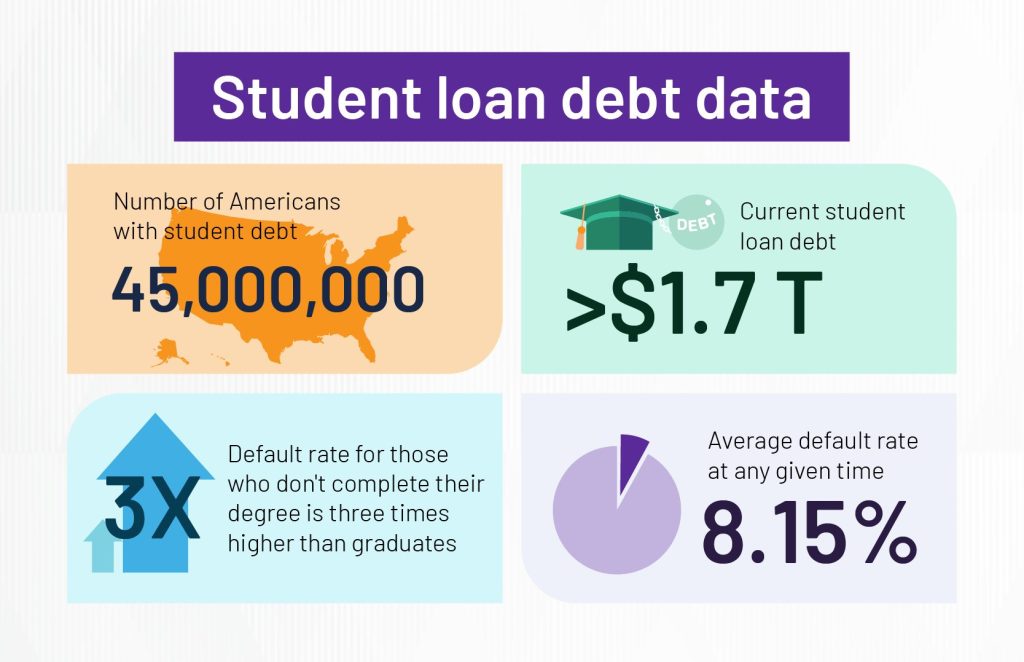
Interestingly, higher debt from graduate or professional degrees can pay off more consistently with higher incomes. In contrast, students who fail to complete their degrees struggle the most to make good with the bank, and their default rate is three times higher than that of graduates. An average of 8.15 percent of student loan debt is in default at any given time. This number will likely increase as students extend their credit to cover the cost of their qualifications.
Enrollment and retention challenges
In 2023, 73 percent of employers leveraged skills-based hiring. The job market is also changing. Skills and talent shortages are forcing employers to look beyond credentials, leveling the playing field for the upcoming workforce. While college degrees have significant ongoing value, workforce trends and tuition expenses are changing perceptions of higher education.
Only 22 percent of Americans say that the cost of a four-year degree is worthwhile, even if it requires taking out loans. When the cost of running a higher education institution is rising, these institutions must also grapple with a group of college-eligible students rethinking whether to attend at all.
Those who start are more likely to withdraw, with more than 40 million students unenrolled. One in four students is at risk of not completing, and about half of the students at risk of dropping out cite finances as a primary concern.
Despite their best efforts, many higher education institutions face declining educational quality as costs rise. Institutions may need to cut programs and services as they extend themselves to keep up with the lack of state and federal funding. More than ever, they rely on tuition and fees to stay afloat, resulting in a potential lack of resources for students looking elsewhere to fulfill their academic needs. And so, the cycle continues.
Workforce and social implications
The cost of college affects student groups differently. Many feel forced to abandon higher education in pursuit of immediate earnings, which adversely impacts their capacity to compete for high-paying jobs in the future. In time, skill-related shortages will intensify. Economic stagnation is another prime concern. Non-degree holders often have an income cap, which limits their contribution to economic growth.
Another significant impact of rising tuition costs is their effect on access to higher education. As costs skyrocket, low-income and first-generation students find it more challenging to attend college. They become stuck in a cycle within the workforce, as their options are limited. For institutions, this means a lack of diversity within the student body, which carries over into the workforce.
Solutions and strategies for higher education institutions
Fortunately, institutions can employ a few strategies to weather the storm of rising tuition costs:
Assess current budgeting models
Many institutions already have an actionable strategic plan for containing costs. However, many previous strategies fall short of being achievable in today’s changing economic landscape. Institutions may need to implement a different budgeting model, which begins with gathering data on their allocation processes and outcomes. From there, they can compare their datasets with those of other colleges to serve as benchmarks.
Data tells institutions where they’re spending the most and whether it’s effective so they can identify opportunities to cut back. Some common budgeting pitfalls include:
- Rushed hiring: Filling open positions fast can be more expensive than hiring part-time or adjunct faculty until there’s more budget available.
- Enrollment gaps: A discrepancy between enrollment numbers and academic budgets can mean some departments receive more funding than they need.
- Incompatible tech: The more software tools an institution uses, the more it spends on maintaining licenses and training administrative staff. Institutions can save costs and time by purchasing an end-to-end solution.
Prioritize institutional efficiency and data-driven decision-making
The more institutions can keep their costs down, the better they can alleviate the burden on students and their families. In any crisis, the first step is to focus on what matters, streamlining administrative processes and reducing unnecessary spending. The systems they use to capture assessment, student, faculty, and administrative data can answer pressing questions about how they use their time and resources.
Many institutions struggle with siloed data, which prevents them from getting the full picture of their effectiveness. Data centralization is a practical solution that reduces the oversight required to manage several unconnected systems. With centralized data, institutional leaders have a complete view of performance, enabling informed decision-making around strategic priorities and resource allocation.
Focus on accreditation
Despite the pullback in state and federal funding, students who receive it must attend an accredited institution or program. In many cases, employers of nontraditional students will ascertain whether a program is accredited before providing tuition assistance. Similarly, new employers prioritize graduates from accredited institutions. Higher education institutions must have accreditation to be eligible for state and federal grants, loans, and other funds.
Despite its importance, the accreditation process is not without challenges. It requires preparation, collaboration, and the right set of tools. With the right approach, institutions can gather accreditation data in one place, seeing real-time insights to continuously improve. For many, the trick to successful and cost-effective accreditation is to be ready rather than scramble at the last minute to compile information.
Enhance student enrollment and retention efforts
Student satisfaction speaks for itself in many ways. Firstly, retention is cheaper than enrollment, so funneling resources into an engaged student body makes sense. Second, engaged and satisfied students are excellent marketing, solidifying an institution’s reputation and, thus, potentially reducing outreach budgets.
The first step is to measure institutional effectiveness using course evaluations, surveys, focus groups, assessment outcomes, and accreditation self-studies. Armed with information from students, institutions get a picture of their success on the ground and can divert resources into improvement opportunities, including enrollment and retention.
The trick is to balance student support and academic quality with course effectiveness. The following tips can help institutions achieve this balance:
- Improve the academic experience: Helping students with financial burdens and academic challenges begins with providing a premium educational experience. Institutions can encourage faculty to be proactive using tools that boost engagement.
- Support mental health: Even within budget, institutions should offer beneficial and accessible mental health resources. They can foster holistic well-being through promoting faculty engagement and social resources. However, it’s essential to connect students with this support and ensure they know how to access it.
- Develop actionable intervention strategies: Institutions can use data to identify at-risk students and intervene to get them back on track. Providing assistance when students need it most is essential to any retention strategy.
- Link course content to meaningful careers: More than ever, students want to see how their coursework links to careers and earning potential. Institutions can cut costs and create roadmaps to successful careers with curriculum mapping. Curriculum maps give students a sense of purpose and direction and use faculty time more effectively while maintaining compliance with accreditation standards.
Navigating the tuition tightrope — a way forward for higher education institutions
The rising cost of higher education is multifaceted, and the fever shows no signs of breaking soon. The costs of running a successful institution contribute to rising tuition rates. These costs, in turn, intensify student debt, challenge enrollment and retention efforts, and create widespread economic disparities. However, higher education institutions are not without recourse.
These robust strategies are assessing budgeting models, prioritizing efficiency, and enhancing retention efforts. Data remains the driving force behind staying agile in higher education. It helps institutions enhance the learning experience and focus on curricula in a way that mitigates the impact of rising costs. Ultimately, institutions must take a proactive and strategic approach to achieve their missions and sustain the value of higher education.


